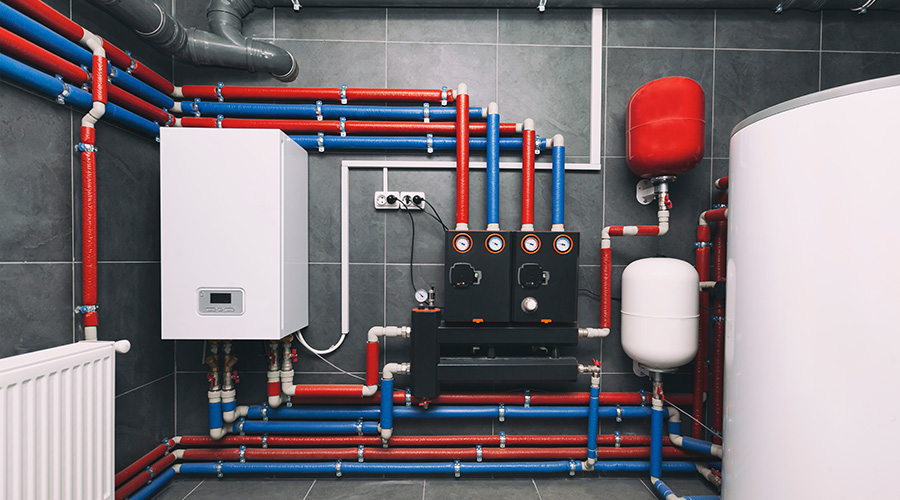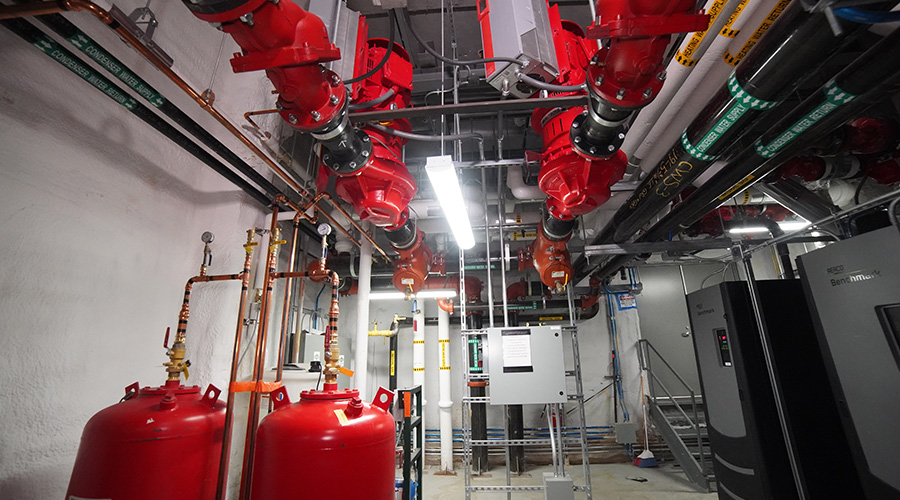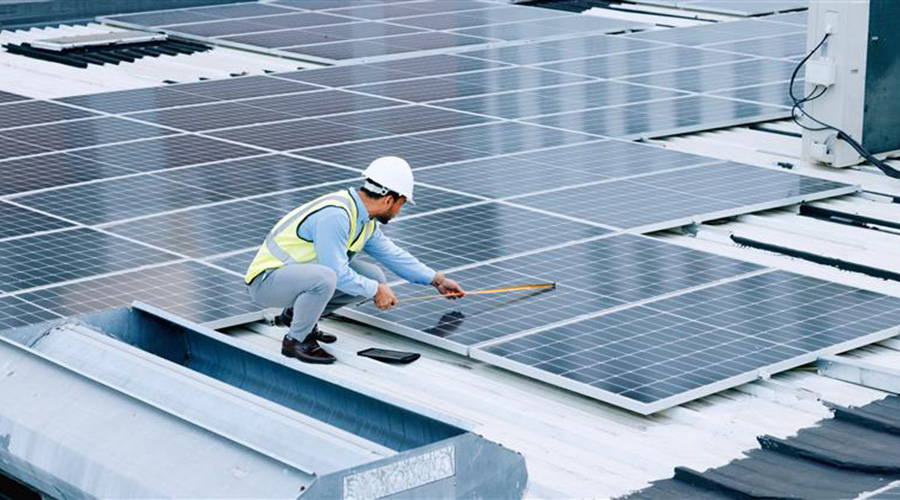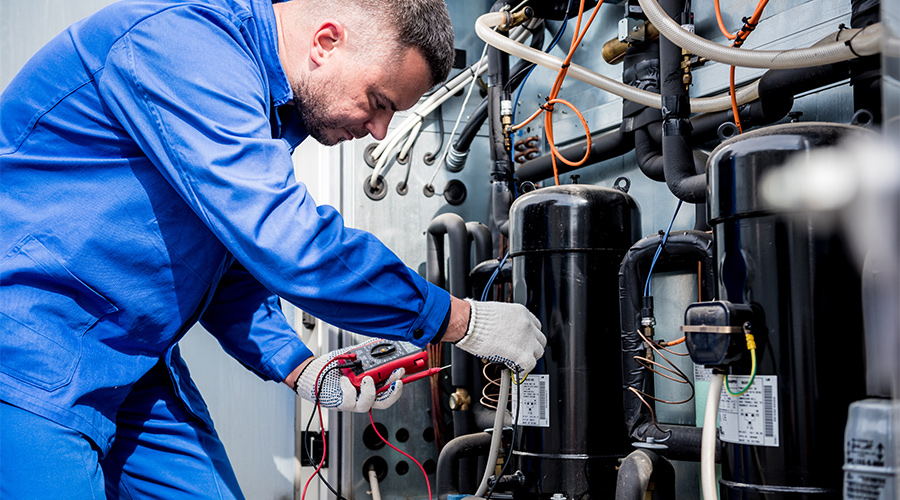HVAC Fixes Involve Operations and Maintenance and Tweaking Human Behavior
Even without commissioning an entire building, most quick payback fixes identified in a building will involve adjustments to control strategies and setpoints, says Peterson.
Saving energy through better building operation starts with finding opportunities in four areas that have been shown to have the most frequent problems and the potential for the greatest benefits, she says.
Most operations and maintenance-related energy waste falls into one of these major categories.
1. Equipment Scheduling: Equipment runs when it is not needed. The concept is fairly basic: Does the equipment run when its not needed? In instances where equipment is running unnecessarily, facility managers can save heating and cooling costs.
Peterson recommends walking through the building when it is unoccupied and identifying unnecessary equipment operation. If equipment is running, look for a reason. It is usually obvious that a lamp or printer should be off, but HVAC equipment may be running to supply a computer room that needs continuous conditioning, or to condition some other process load.
Gilmer suggests day cleaning to cut unnecessary equipment run times. Rather than have cleaning staff come through at night (thereby requiring lighting and HVAC in minimally occupied spaces), she suggests daytime cleaning.
"We've seen some really positive results," she says. To be practical, Gilmer suggests conducting any noisy cleaning activities at the end of the day or early morning.
"It's a different take on equipment scheduling, but it saves lighting and HVAC costs," she says. "Plus people tend to complain less about cleaning because they see it happening."
2. Sensor Error: Erroneous sensor data causes increased heating, cooling, or equipment operation, which can affect occupant comfort.
"Sensors and thermostats can be a good, low-cost way for building owners to improve HVAC costs, too," Gilmer says. "Calibration is a big deal and facility managers need to look for anomalous occurrences."
Older carbon dioxide sensors need to be calibrated as often as every two months, and some newer sensors are guaranteed to be accurate for the service life of the sensor — five to 15 years. After that, facility managers should replace the sensors for maximum equipment performance and minimized energy costs.
Control sensors with the most potential to have a significant effect on energy use are generally those used to implement resets and control outside air at air handlers and central plants. While the impacts can be huge, the fix is simple: Regular calibration.
According to Peterson, many sensor problems can appear to be other issues, including:
- Plant and system loads not met
- Reset schedule not working
- Outside-air economizer not functioning properly
- Boilers and chillers on when not needed
- Equipment not modulating as expected
- Simultaneous heating and cooling.
3. Simultaneous Heating and Cooling: The same air gets heated and cooled, or hot and cold air streams get mixed together to make warm air. When central HVAC systems use reheating, a building is typically zoned for the central fan supply. At the zone level, air is usually modulated to satisfy the cooling load or may need to be reheated to meet a call for heating.
Peterson says control strategies can be implemented to optimize the supply-air temperature and reduce reheat. If a control strategy is not optimized, the supply air will be cooler than necessary and reheating it will use more energy than necessary.
In addition to increased energy costs, simultaneous heating and cooling increases operational costs. When the central system delivers cooler air than required, the zone reheat coils must temper the air before it is delivered. The heating and cooling systems work against each other. This creates unnecessary wear on electric heating coils, contactors, hot-water pumps, chilled-water pumps, boilers, chillers and auxiliaries.
4. Outside-Air Usage: The economizer does not function optimally, or excessive outside air causes increased heating and/or mechanical cooling, and sometimes too little air compromises indoor air quality. Heating outdoor air is an energy-intensive and expensive process.
For these reasons, Gilmer recommends closely maintained economizers. "The linkages might get broken or they can be stuck," she says.
Stuck open or closed, the energy losses can tally quickly. According to BetterBricks, heating 20 cfm (typical for 1 person) of outside air for 14 hours per day, five days per week using electric resistance heat at 6 cents/kWh costs about $28 per year in a typical northern climate (Seattle was used for the study). If an air handler supplies an extra 1,000 cfm of outside air it costs approximately $1,400 per year.
So whether facility managers take the plunge on the short payback of commissioning or merely opt to scrutinize setpoints and scheduling, low-cost and fast-payback HVAC options exist. 
Loren Snyder, a contributing editor for Building Operating Management, is a writer who specializes in facility issues. He was formerly managing editor of Building Operating Management.
The Human Element: Change Behavior to Save Energy
Mechanically, there's only so much savings a facility manager can wring from the HVAC system.
"Most often cost-effective low-hanging fruit is based in behavior change rather than equipment change outs," says Janice Peterson, manager of the Northwest Energy Efficiency Alliance's BetterBricks' building operations program.
Knowing that, facility teams need to cajole building occupants or an organization's employees into behavior patterns that return better paybacks. Sound tough? It doesn't have to be, particularly when facility managers partner with other departments to tailor appropriate internal communications.
To that end, Laurie Gilmer, an associate at Facility Engineering Associates, recommends formulating an aggressive "thermal comfort policy" and then sharing it with occupants.
"I've seen better success with open communication," she says. "Obviously you'll want to avoid adversarial relationships. One way to do that is to get HR and marketing involved — have them contribute and clearly communicate the overall goal of energy reduction."
But getting occupants to understand why their workspace is warmer or cooler than the temperature in their own home can be no small undertaking.
Invariably, someone will bring in a small space heater in the winter or a fan in the summer — which runs counter to energy-saving efforts.
"Organizations need to address this on a case-by-case basis," Gilmer says. "Some are very tolerant of it, understanding that occupant comfort outweighs any other concerns. Others take a hard line and actively police the building."
— Loren Snyder
|
Related Topics:













